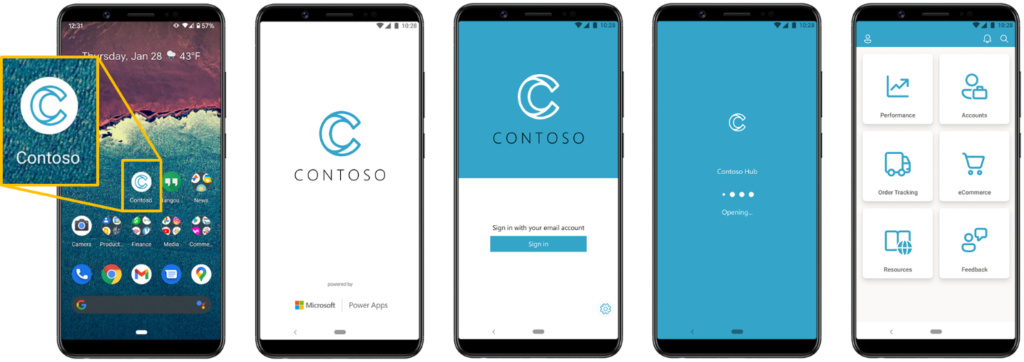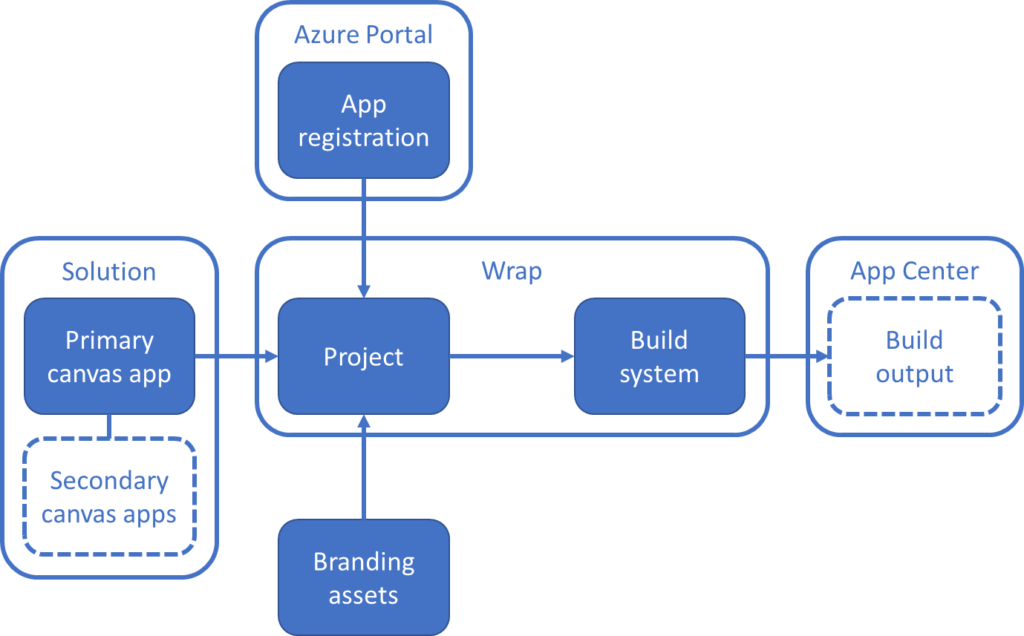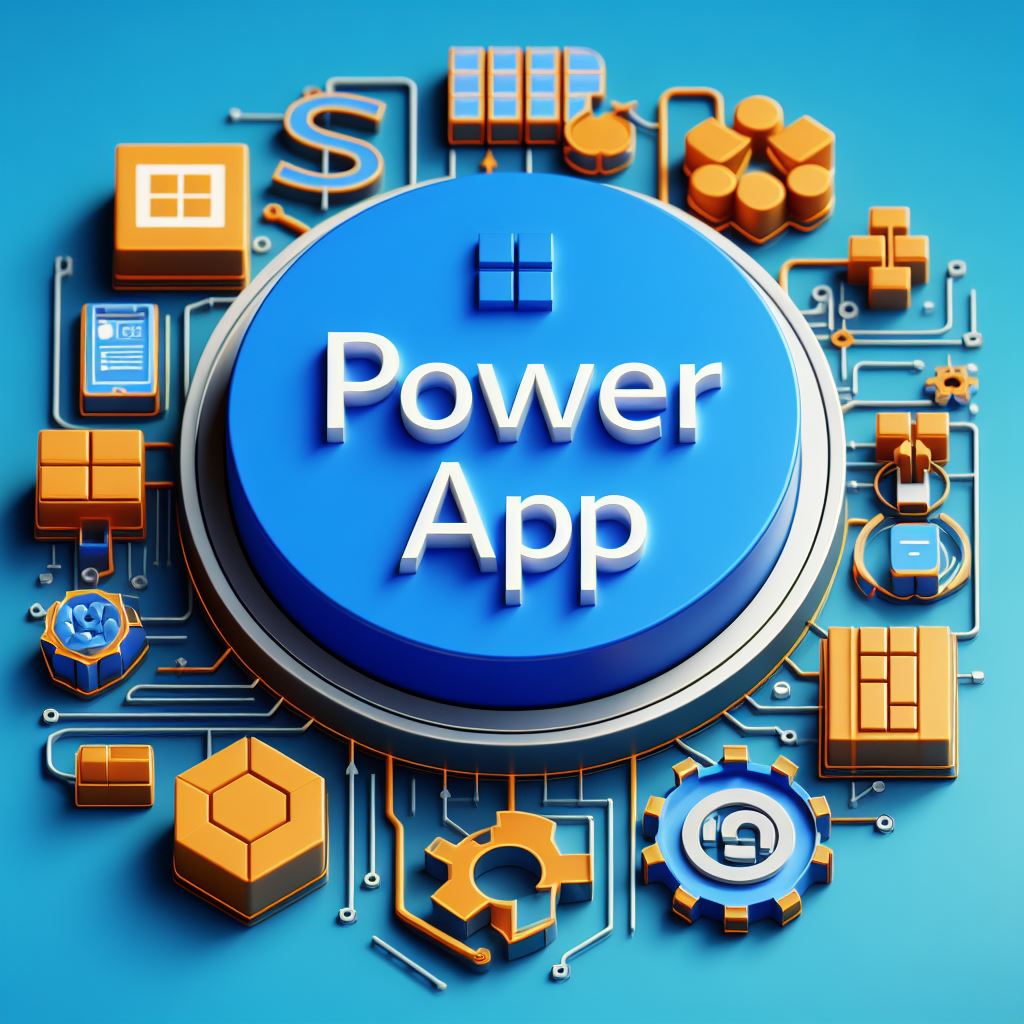We will understand the new Wrap feature in Power Apps for IOS & Android. Before we start, make sure to subscribe to CRM Crate so that you can stay up to date in the field of Power Platform development.

What is a Wrap feature in Power Apps?
The Wrap feature in Microsoft Power Apps enables you to wrap your canvas apps as custom-branded IOS and Android apps, for native distribution to mobile users.
Wrap brings mobile application development platform (MADP) capabilities to Power Apps as given below.
Enterprise governance with Microsoft Intune
It will protect your data with app management
No-code mobile app development
It will allow the developers to make mobile apps with no previous experience
Seamless end-to-end branding
It will allow to use your own logo and color palette
Multiple canvas apps support
It will bundle multiple apps in a single mobile app
Managed mobile app builds
It will we generate the app for you
Understanding the wrapping process?
The wrap feature in Microsoft Power Apps allows you wrap your canvas apps as custom-branded Android and iOS apps for distribution to mobile users through Intune or other native distribution channels. The following section explains steps involved in using the wrap feature to create mobile apps (Platform Independent):

Step 1 – Build & Design a primary Canvas App
Start with your primary canvas app. A primary canvas app is the app that provides the initial experience you want your mobile users to see when they launch your mobile app. Ensure this canvas app is part of a solution (if not, create a new solution and add the canvas app).
Step 2 – App Registration in Azure Portal
Create a new app registration using the Azure portal and configure the API permissions to allow your app to connect with the Power Apps online service. After the app is successfully registered copy the Application (client) ID and the Redirect URI that will be used later to configure the wrap project in Power Apps.
Step 3 – Create a Build Container for the Mobile App
Using Visual Studio App Center, configure a storage location to store the builds of the mobile application. Each platform for the mobile app being built will need a separate app center container. The output type for each build differs depending on the type of target platform selected.

Step 4 – Creating a wrapping project
Creating a Wrap project builds the application package that can be distributed on different mobile platforms. To create a wrap project, go to Power Apps > Apps > select the canvas app > select Wrap, and enter the wrap project details. After entering details, select Save > Build. Depending on the platform selected during the build process an application package will be generated for iOS, Android, or Google platforms.
Step 5 – Branding the mobile application
Customization options are available during the build process of the wrap project. Brand the app to match organization standards by adding custom images, logos, icons, and color palettes to offer a personalized user experience.
Step 6 – Building an application
Start the build process to generate your custom-branded mobile app.
Step 7 – App availability in store
After the build process is completed an output package is generated that will be available in the app center storage for download. Download and test the mobile application, perform code-sign and create a distribution certificate to share the app package with other mobile users via app stores, Microsoft Intune, or similar distribution channels.
Wrapping multiple canvas apps together
Power Platform’s wrap also offers the ability to package multiple canvas apps into a single mobile application. A multi-app package contains a primary canvas app and some additional canvas apps called as secondary apps.
The primary app offers the initial UI experience to the application users when they first launch the mobile application. Secondary apps are optional and not necessarily included in every application package. The primary canvas app provides the point of entry and has links to all the secondary apps contained inside the package. The navigation between primary and secondary apps wrapped together inside a mobile application package is managed by the Launch () function.

The “Launch ()” function can launch a canvas app or a webpage from another app. Below are the parameters used by the Launch () function.
Address (Required)
This is the URL of the webpage or the App ID of the canvas app that the user is trying to launch.
Parameters (Optional)
These are the values that can be passed to the webpage or canvas app. Inside canvas apps, these parameters are read with the Param function.
Target (Optional)
This defines the browser window or the tab in which the user wants to launch the webpage or the canvas app.
What are the prerequisites & requirement for utilizing the Wrapping feature?
The following list explains what you’ll need before you can start using wrap feature to publish one or more canvas apps as a mobile app package.
Permissions and access requirements
- Access to one or more canvas apps to build the wrap project
- Access to Power Platform admin center to install the wrap feature
- Access to Azure portal to create app registration
- Access to Microsoft App Center
Software and device requirements
- Mac device for code signing with iOS
- Windows PC for code signing with Android
- Android device with version 10 or higher
- iOS device with version 14 or higher
Conclusion
With the new Wrap feature, makers can now create platform-specific application packages directly from Power Apps using the low-code approach. These application packages can be conveniently shared with users via native distribution channels for quick & easy installation just like any regular mobile application.





